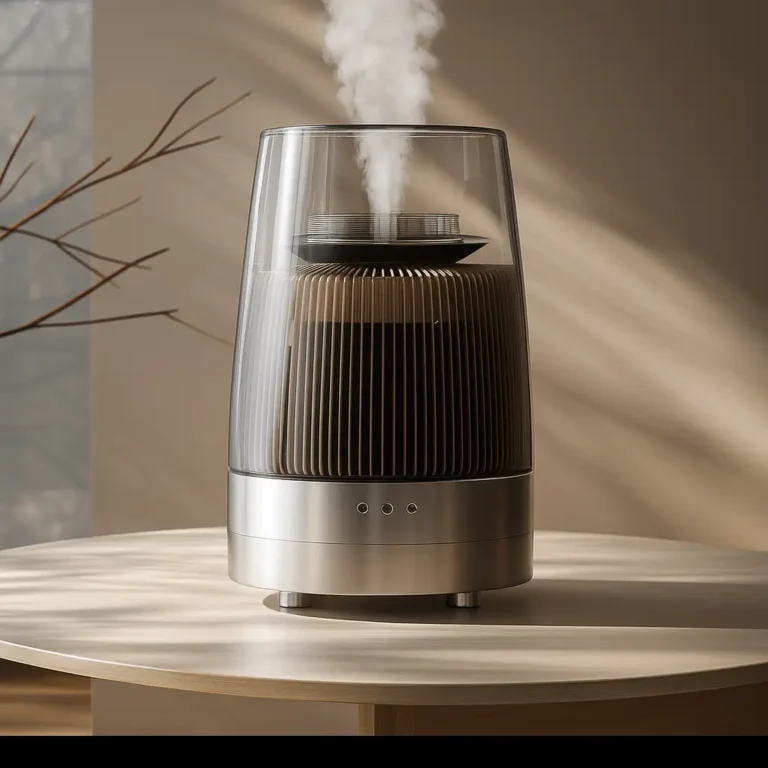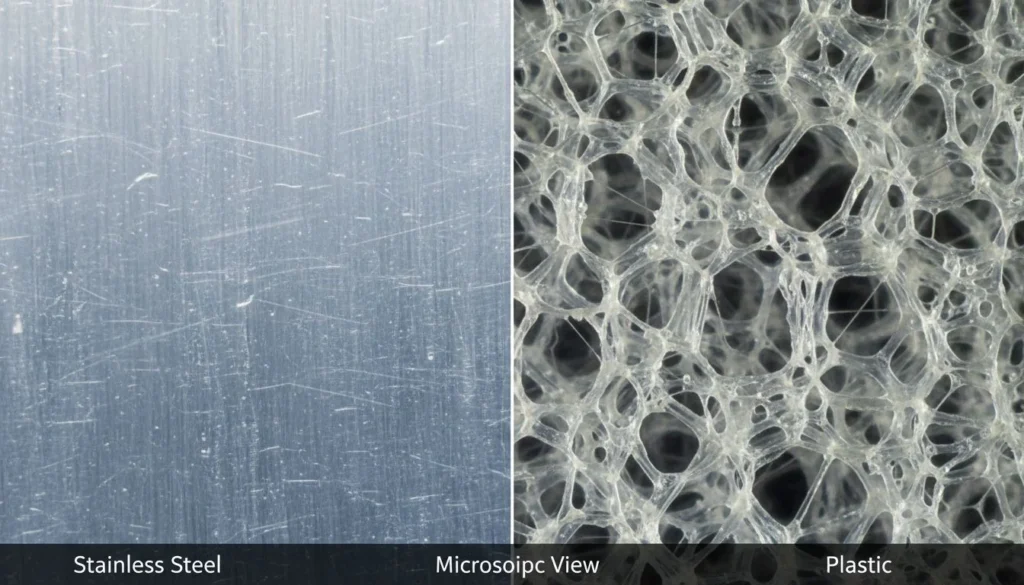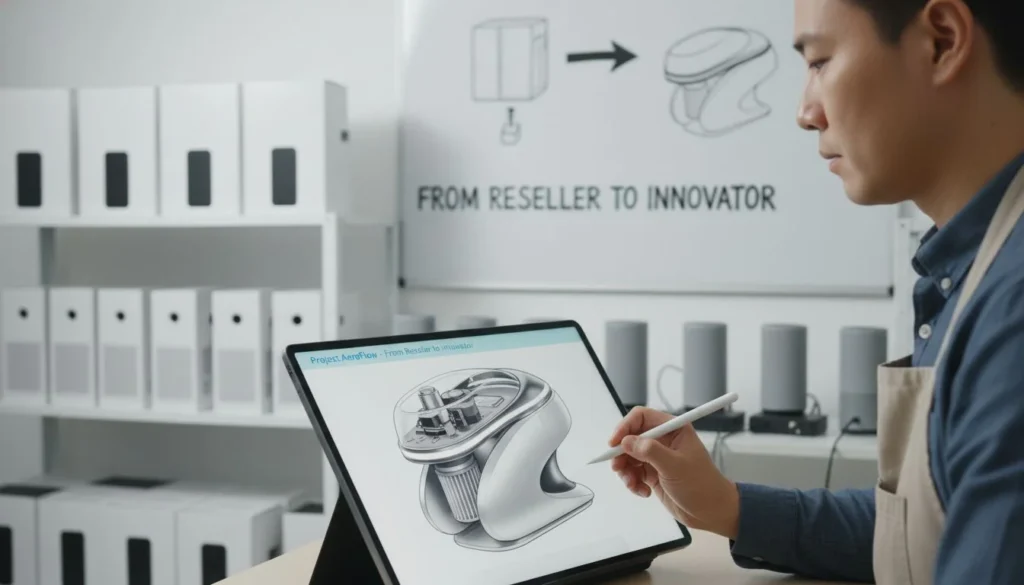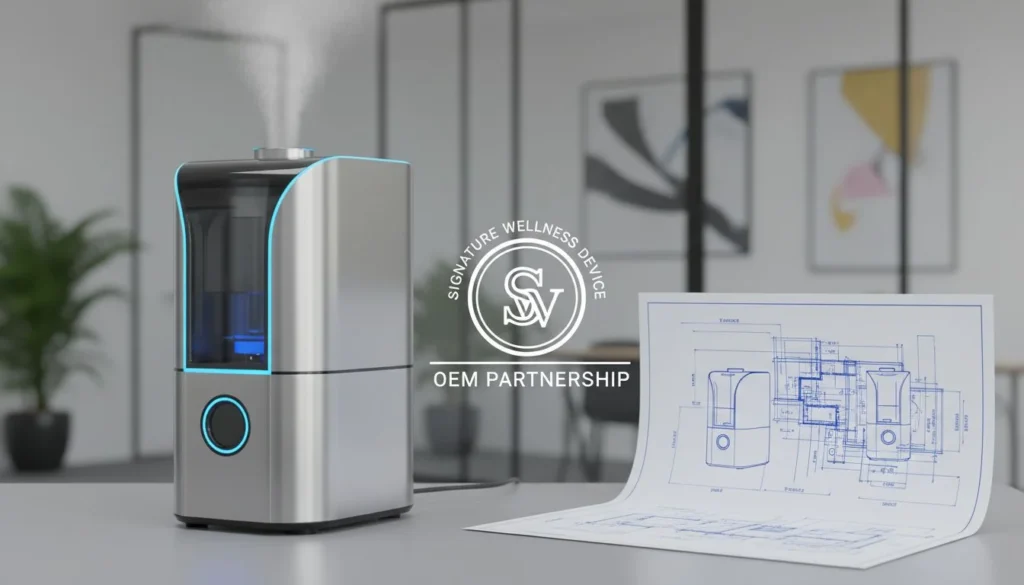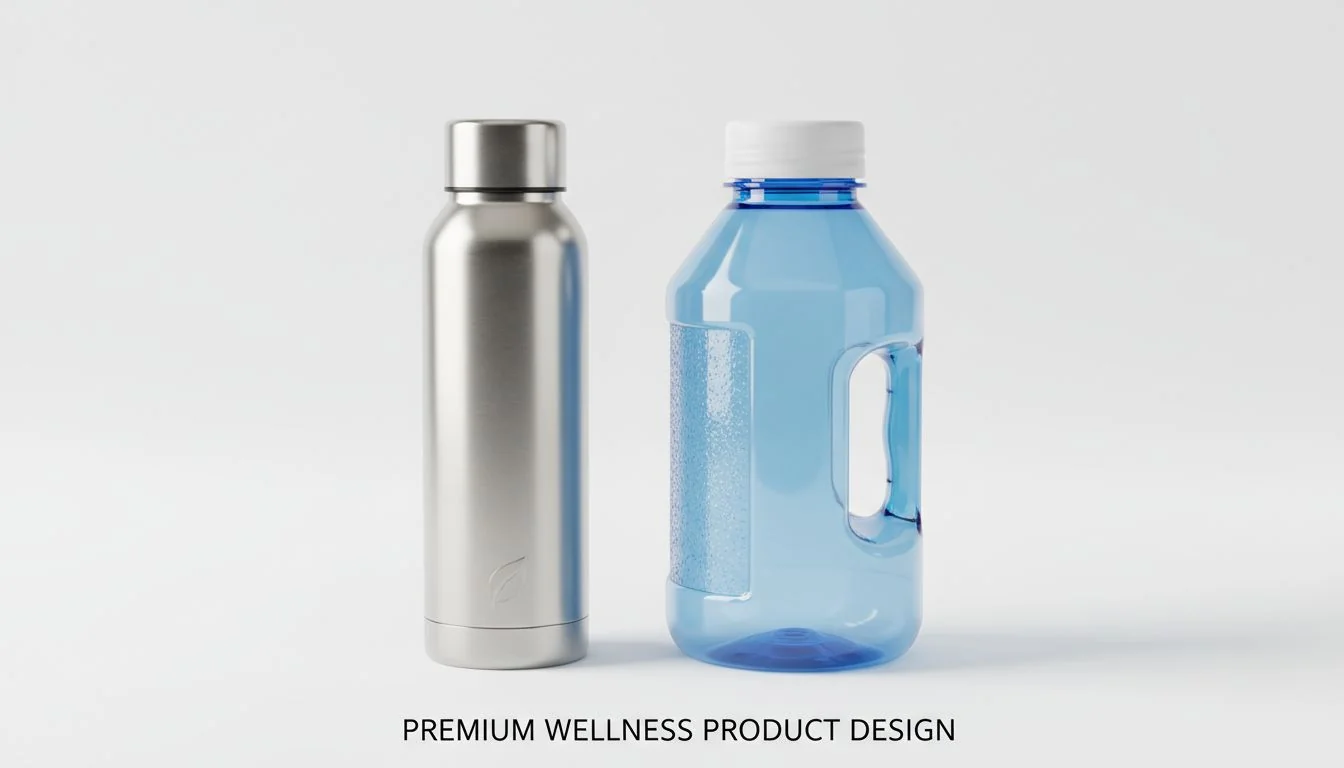
Your wellness product looks great, but cheap plastic parts feel disposable and unhygienic. This erodes trust. Prioritizing material in your ID can build the premium brand you envision.
Industrial design builds a premium wellness brand1 by moving beyond aesthetics. It uses material choice, like stainless steel, to communicate core values of trust, purity, and safety. This tactile experience and ease of cleaning are more powerful brand ambassadors than shape or color alone.

We often think of industrial design2 as just the shape and color of a product. I used to think that way too, especially early in my career focusing on plastic molding. But for wellness products, that's a huge mistake. The physical object in your customer's hand is your brand's most direct messenger. It speaks volumes before they even turn it on. If that message is "cheap" or "hard to clean," you've already lost. Let's explore how to get this right.
The visual aesthetics, such as color and shape, are the most critical factors in a wellness product's industrial design.Falso
While important, material choice and tactile feel often have a greater psychological impact on perceived quality and hygiene.
A product's material can directly influence a user's perception of its cleanliness and safety.Verdadeiro
Materials like non-porous stainless steel are perceived as more hygienic and easier to clean than complex plastic assemblies, reducing 'hygiene anxiety.'
How Can ID Communicate Core Values Like Trust, Purity, and Safety?
Your wellness brand promises purity and safety, but how do you make customers feel it? If the product design doesn't align, your message is lost. Let's bridge that gap.
Industrial design communicates core values through tangible choices. Material selection (e.g., stainless steel3 for purity), form simplicity (for safety and ease of use), and tactile feedback (for trust and quality) transform abstract brand promises into a physical, believable experience for the user.
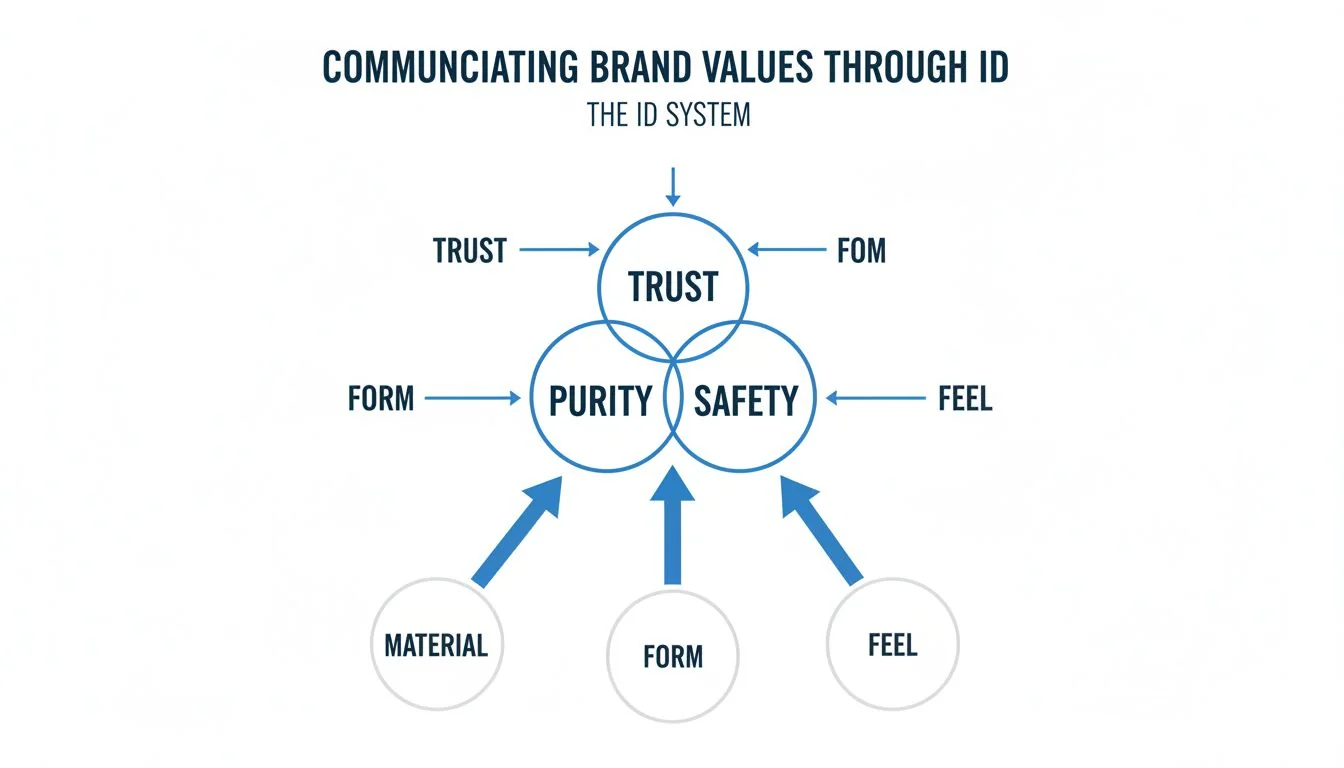
I've seen countless projects where a design team obsesses over the perfect Pantone color. They spend weeks debating shades, only to package their amazing technology in a generic plastic shell that feels hollow and cheap. The customer doesn't feel the Pantone color. They feel the flimsy plastic. For a wellness brand, this is a critical failure. Your design must translate your brand's promises into a physical reality.
The Psychology of Touch
The first interaction a user has with your product is tactile. The weight, temperature, and texture of the material send immediate signals to the brain. A heavy, cool-to-the-touch object feels substantial and permanent. A light, flexible plastic object feels temporary and disposable. This first impression is powerful and sets the tone for their entire experience.
From Abstract to Tangible
Your brand values are just words on a website until the customer holds your product. Good ID makes those words real.
| ID Element | Communicates Value | Exemplo |
|---|---|---|
| Material | Purity, Permanence | Stainless steel feels clean and durable. |
| Form | Safety, Simplicity | A simple shape with no crevices looks easy to clean. |
| Peso | Quality, Trust | A heavier product feels more substantial and well-built. |
| Finish | Precision, Care | A smooth, seamless finish suggests high-quality manufacturing. |
Consumers primarily judge a product's safety based on its certification labels, not its design.Falso
While certifications are crucial, perceived safety is heavily influenced by the product's design, materials, and ease of maintenance. A complex, hard-to-clean design can create anxiety despite certifications.
Minimalist designs are often perceived as more trustworthy and honest in wellness products.Verdadeiro
Simplicity in design can imply transparency and a focus on core functionality, suggesting the brand has nothing to hide. This builds user trust.
Is the 'Plastic Problem' Sabotaging Your Wellness Promise?
You chose plastic for its versatility and cost. But now your premium wellness product feels cheap and disposable, and customers worry about cleaning it. This is the "plastic problem."
Yes, the "plastic problem" can sabotage a wellness brand. Plastic's association with disposability and the difficulty of cleaning complex molded parts create "hygiene anxiety4." This tactile and visual experience contradicts promises of purity, permanence, and premium quality, eroding brand trust.
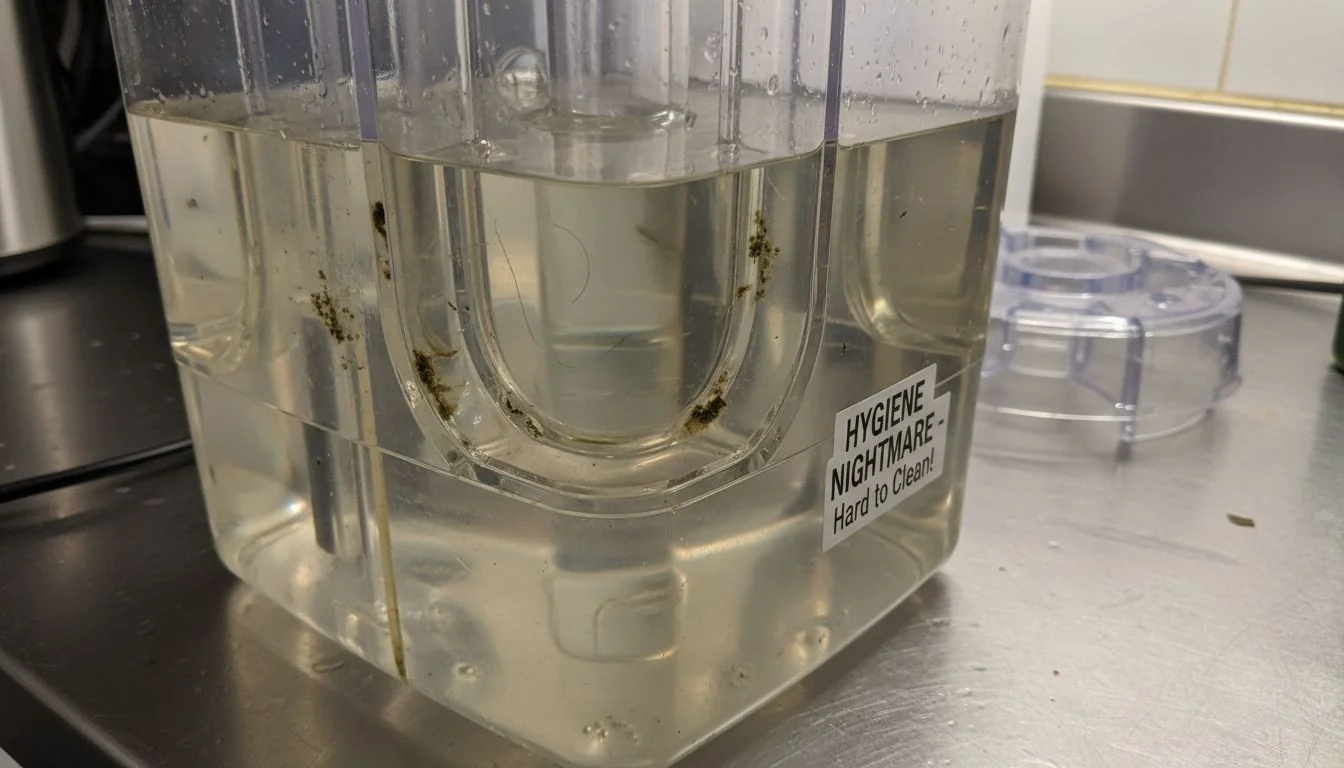
In my years of mold making, I've seen incredibly complex plastic parts. From an engineering standpoint, they are marvels. We can create intricate features, snaps, and ribs. But for a user trying to clean a wellness product, these features are a nightmare. Every seam, rib, and sharp internal corner is a potential trap for grime and bacteria. The user looks at it and feels a sense of stress. They know they can't get it perfectly clean. This is "hygiene anxiety," and it's a brand killer for wellness.
The Feel of "Cheap"
Beyond hygiene, plastic often just feels cheap. It's the material of disposable water bottles and takeout containers. Even high-quality plastics can't escape this association. When a customer pays a premium price for a wellness product, they expect a premium feel. The light weight and flexible nature of many plastics can feel like a betrayal of that expectation.
Designing Away "Hygiene Anxiety"
Good ID removes anxiety. A simple, open, smooth-surfaced design looks easy to clean. It gives the user confidence.
| Material | user perception5 in Wellness | Psychological Impact |
|---|---|---|
| Complex Plastic | Hard to clean, disposable, cheap | High Anxiety, Low Trust |
| Simple Stainless Steel | Easy to clean, permanent, premium | Low Anxiety, High Trust |
All plastics are perceived equally by consumers in terms of quality and hygiene.Falso
Consumers can differentiate. High-gloss, thick-walled ABS can feel more premium than thin polypropylene, but the fundamental perception of plastic as less permanent and potentially less hygienic than metal or glass often remains.
Complex part designs with many seams and crevices, common in plastic molding, can increase user anxiety about cleanliness.Verdadeiro
Visually complex surfaces suggest areas where bacteria and grime can accumulate, making the user feel the product is never truly clean, which is a major issue for a wellness device.
You want your product to feel premium, permanent, and clean. Marketing slogans aren't enough. Your material choice6 must do the talking, and plastic often sends the wrong message.
Stainless steel is a powerful ID statement because it is a "low-anxiety" material. Its weight, cool touch, and smooth surface instantly communicate permanence, quality, and hygiene. It feels like a medical instrument or high-end kitchenware, not a disposable gadget, aligning perfectly with wellness values.
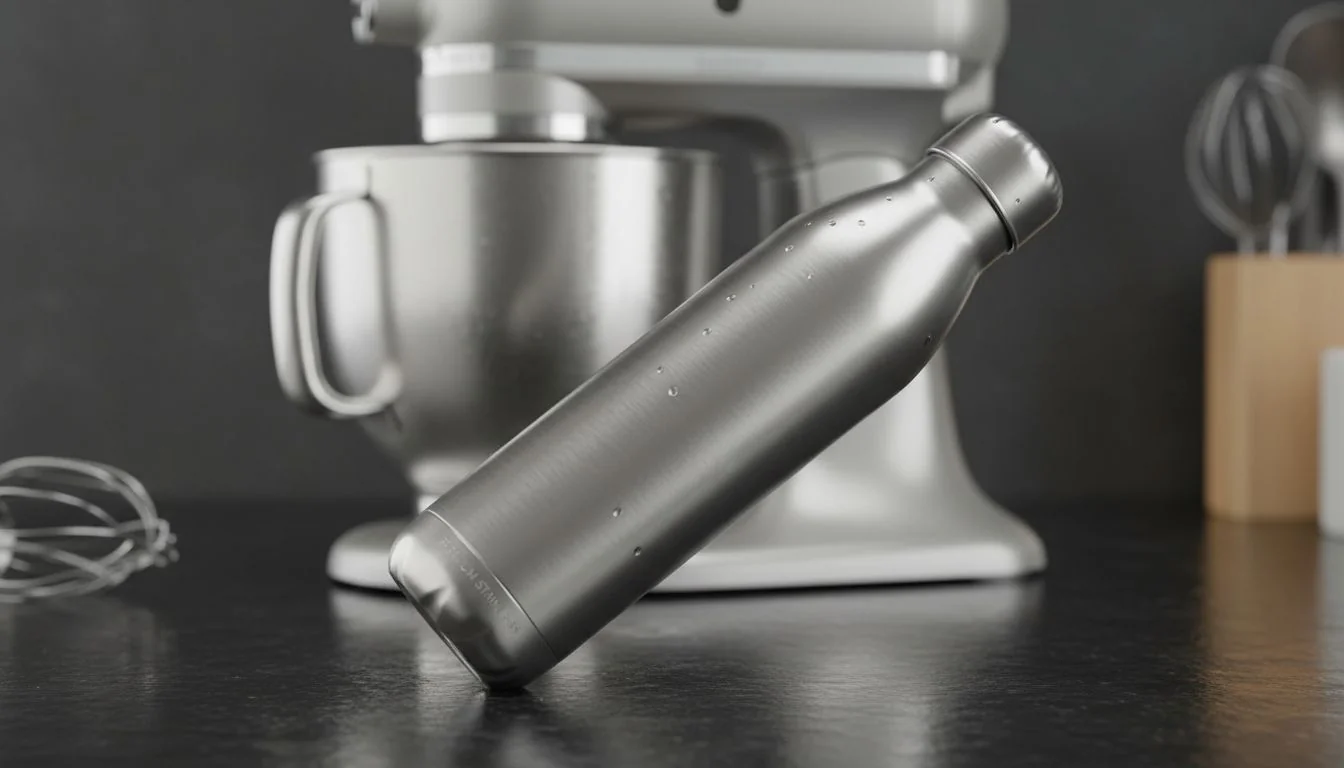
Think about other premium products. High-end kitchen appliances use brushed stainless steel. Luxury watches are machined from solid blocks of it. Apple built its premium reputation on aluminum and steel. These brands understand that material is the message. For wellness, stainless steel is a perfect fit. It's non-porous, easy to sterilize, and visually communicates cleanliness. It feels like an investment in your health, not a temporary fix.
The Power of Tactile Feedback
The simple act of picking up a product made of stainless steel tells a story.
- The Weight: It signals substance and durability. It doesn't feel hollow or fragile.
- The Temperature: It feels cool and solid, a sign of its density and quality.
- The Surface: It's smooth and seamless, implying precision and hygiene.
Borrowed Trust from Other Industries
When you use stainless steel, you are borrowing trust from the medical and culinary fields. People associate this material with surgeons' tools and professional kitchens—places where hygiene is non-negotiable. This positive association is instantly transferred to your brand.
| Sensory Input | Plástico | Stainless Steel |
|---|---|---|
| Touch (Temp) | Room temperature, inert | Cool, solid |
| Peso | Light, hollow | Substantial, dense |
| Sound (Tap) | Dull thud | Clear, metallic ring |
| Visual | Can look cheap, scratches easily | Looks clean, professional |
Stainless steel is always the best material choice for any wellness product.Falso
While excellent for communicating premium quality and hygiene, factors like weight, cost, electrical conductivity, and design complexity might make other materials (like premium polymers or glass) more suitable for specific applications.
The perceived value of a product can be significantly increased by changing its primary material from plastic to stainless steel, even if the function remains identical.Verdadeiro
This is due to the psychological associations of steel with durability, precision, and value, a phenomenon known as 'material-based value perception.'
How Can You Co-Develop a 'Signature' ID with an Innovation Partner?
You need a unique product fast, but OEMs are too slow and ODMs offer generic designs. You feel stuck between reinventing the wheel and selling a me-too product.
Co-develop a signature ID7 by using a "Platform-Based OEM" model. This partner provides a certified, hygienic core technology (the hard part), while you focus on applying your unique brand aesthetics and materials to the exterior (the fun part). This accelerates development without sacrificing brand identity.
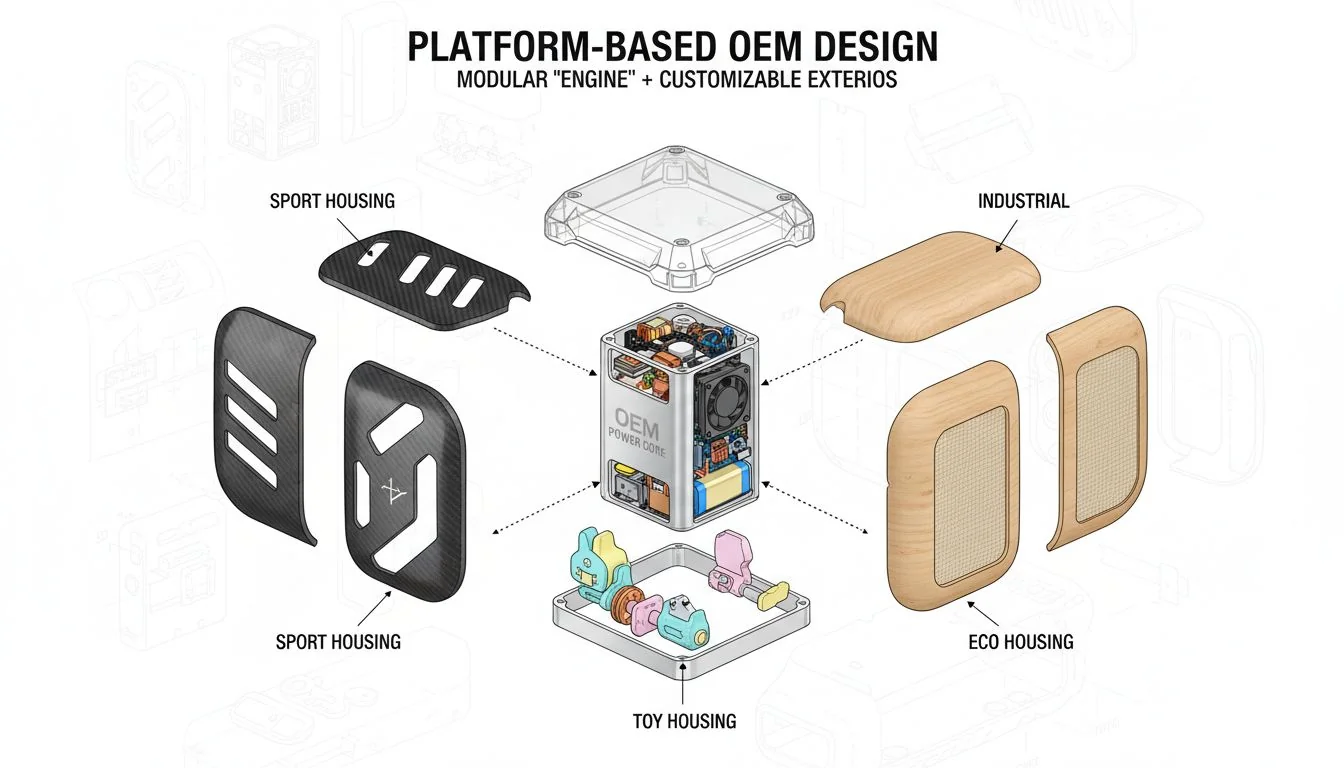
This is a huge challenge I see with many brands I work with. They have a great brand vision but get bogged down in the technical details. The traditional manufacturing models don't help. This is where a new model comes in, one that is perfect for designers like you.
The Old Models: OEM vs. ODM
- Pure OEM (Original Equipment Manufacturer): You design everything, and they build it. This gives you full control but is incredibly slow and expensive. You are responsible for all R&D and certification.
- Pure ODM (Original Design Manufacturer): They have a ready-made product, and you just put your logo on it. This is fast and cheap, but your product looks like everyone else's. There is no unique brand identity.
The New Model: The Innovation Platform
A platform partner provides the best of both worlds. They have developed the core "engine" of the product—for example, the certified, hygienic stainless steel tank and ultrasonic unit for a humidifier. This is the hard part. You, the designer, then get to create a unique "signature" housing around it. You can choose your own shapes, colors, and interface, creating a product that is 100% your brand, but built on a proven, reliable core.
| Partnership Model | Velocidade de colocação no mercado | Design Uniqueness | R&D Cost |
|---|---|---|---|
| Pure OEM | Slow | Elevado | Elevado |
| Pure ODM | Fast | Baixa | Baixa |
| Platform Partner | Fast | Elevado | Médio |
Using a platform partner means your product will look identical to your competitors'.Falso
A good innovation platform provides the internal core technology, but offers significant flexibility for the external housing and user interface, allowing brands to create a completely unique and 'signature' industrial design.
The 'Platform-Based OEM' model can significantly reduce a product's time-to-market.Verdadeiro
By building on a pre-certified and validated core technology, brands can bypass lengthy R&D, testing, and certification cycles for the most complex components, focusing resources on design and marketing.
What's the Most Important ID Decision You'll Make?
You're making countless ID decisions for your new wellness product. It's easy to get lost in the details. But one choice matters more than all the others combined.
The most important ID decision is choosing a material and form that eliminates "hygiene anxiety." This single choice communicates trust, purity, and quality more effectively than any color, shape, or feature. It's the foundation of a premium wellness brand.
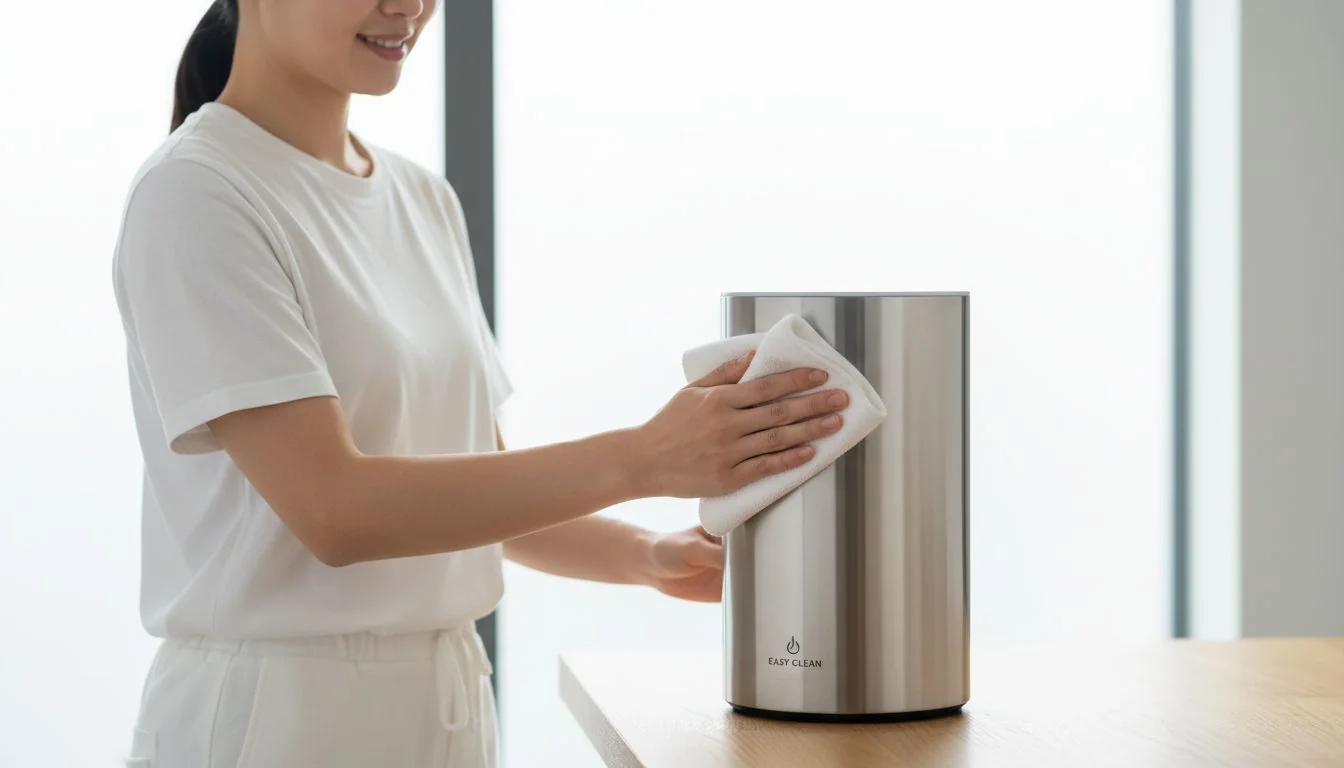
We've covered a lot of ground. We've redefined industrial design away from just shape and color. We've talked about the "plastic problem" and the power of stainless steel. We've even looked at a new partnership model that empowers designers. It all comes back to one central point. For a wellness brand, the customer's confidence in the product's cleanliness and safety is everything. Your most important job as a designer is to build that confidence through the physical object itself.
As a designer, your power isn't just in making things look good. It's in making people feel good about the products they use. For wellness, that feeling starts with the confidence that the product is clean, safe, and built to last. When you focus on eliminating hygiene anxiety, you are not just making a better product. You are building a stronger, more trusted brand. That is the true power of great industrial design.
Once a product is launched, its industrial design cannot be significantly improved without a complete redesign.Falso
Brands can often introduce 'mid-cycle refreshes' using new materials or finishes for the housing while keeping the internal components the same, especially when using a platform model.
A brand's choice of material for its flagship product can set customer expectations for all future products in its lineup.Verdadeiro
The initial material choice establishes a baseline for perceived quality and price, creating a 'brand standard' in the consumer's mind.
Conclusão
Your product is your brand's physical ambassador. By prioritizing material and hygiene over simple aesthetics, your industrial design can build the trust that defines a truly premium wellness brand.
References
-
Understanding the elements that create a premium wellness brand can help you elevate your product's market position. ↩
-
Understanding industrial design's impact on branding can help you create more effective marketing strategies. ↩
-
Investigating the benefits of stainless steel can guide your material selection for high-quality products. ↩
-
Learning about hygiene anxiety can help you design products that alleviate consumer concerns and build trust. ↩
-
Understanding user perception can help you design products that resonate with your target audience. ↩
-
Exploring the impact of material choice can enhance your understanding of consumer psychology and product design. ↩
-
Exploring the concept of signature ID can inspire unique and recognizable product designs. ↩



